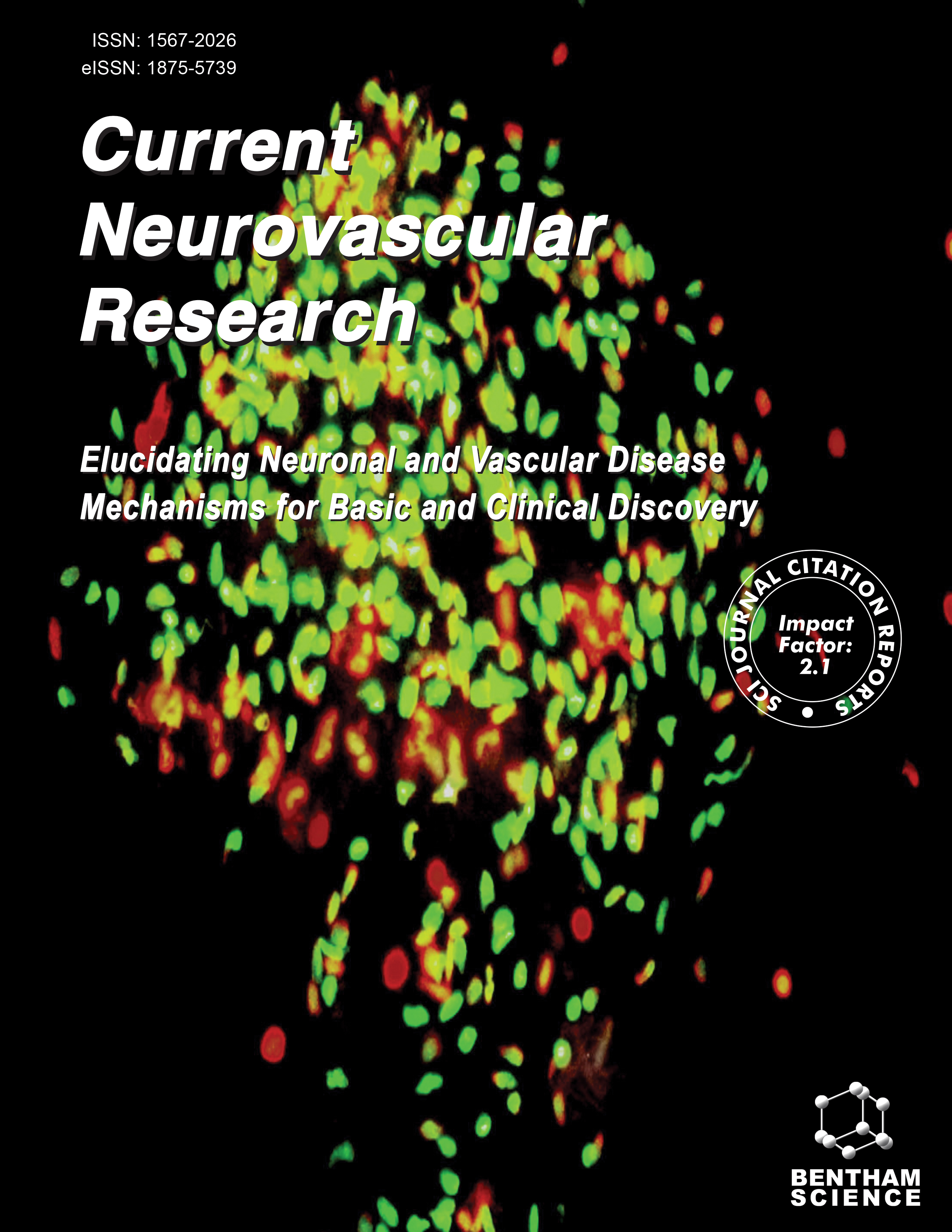-
oa CT Perfusion Metrics as Indicators of Intracranial Atherosclerotic Stenosis in Acute Ischemic Stroke: A Clinical Analysis
- Source: Current Neurovascular Research, Volume 21, Issue 5, Dec 2024, p. 554 - 563
-
- 12 Nov 2023
- 15 Dec 2024
- 26 Dec 2024
Abstract
Intracranial Atherosclerotic Stenosis (ICAS) is a prevalent etiology of acute ischemic stroke (AIS), leading to significant morbidity and mortality. The accurate diagnosis and treatment of ICAS-induced AIS are critical to improving outcomes. This study assesses the application of Computed Tomography Perfusion (CTP) in predicting ICAS in AIS patients and its potential impact on patient management.
A retrospective analysis was conducted on 224 AIS patients who underwent endovascular therapy (EVT) at one single Chinese Stroke Center between April 2022 and December 2023. Clinical and radiological data were collected, including patients’ demographics, CTP parameters, and 90-day modified Rankin Scale (mRS) scores. Logistic regression and receiver operating characteristic (ROC) curves evaluated the predictive power of CTP parameters for ICAS.
CTP analysis revealed significant differences in perfusion parameters between ICAS-induced AIS and other etiologies. ICAS patients had a smaller ischemic volume on admission and higher mismatch ratios [Time to Maximum, Tmax>6s: Other Causes: 132.4 [70.5, 183.3] mL, ICAS: 96.3 [79.8, 107.3] mL, p =0.0064; relative cerebral blood flow, rCBF<30%: Other Causes: 2.4 [0.0, 10.8] mL, ICAS: 0.6 [0.0, 7.0] mL, p =0.0145; mismatch ratio: 7.4 [2.5, 15.0], ICAS: 11.0 [4.6, 17.8], p =0.0285], indicating more salvageable brain tissue. The 90-day mRS showed better functional outcomes in the ICAS group, with a higher likelihood of minimal to no disability [mRS 90 equals 0-1: ICAS: 53.0% vs. Other Causes: 36.3%, p =0.0122]. The predictive model for ICAS, combining clinical manifestations and CTP parameters, yielded an area under the curve (AUC) of 0.7779, demonstrating good diagnostic performance.
CTP is a valuable diagnostic tool for ICAS-induced AIS, offering the potential for early identification and informing the decision for endovascular treatment. The positive correlation between CTP findings and patient outcomes supports its utility in clinical practice.


